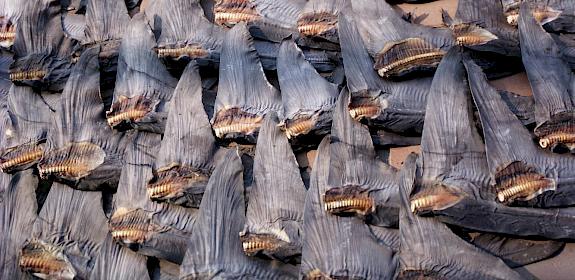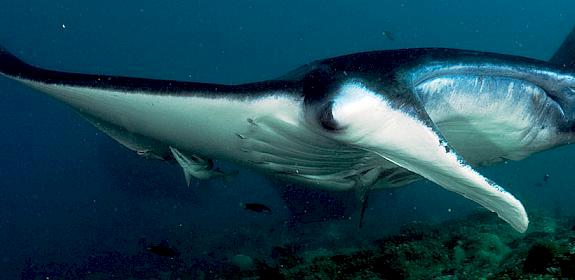A slow song of despair: TRAFFIC experts sound the alarm on lack of management threatening Guitarfish
In an article recently published in Elsevier’s Marine Policy Journal, experts lead author Samantha Sherman and co-author Glenn Sant, pose that all 33 Guitarfish assessed via a rapid management risk assessment called ‘M-Risk’ are not adequately managed by fisheries.
Guitarfishes have a global distribution, but individual species are not widespread, and most species occur in just a few countries. They are primarily found in tropical waters flanked by countries with high levels of artisanal fishing and lower capacity to sustainably manage catch. On top of this, in some regions, these species are increasingly being targeted or retained as an incidental catch for their skins for leather, fins, and meat.
The ‘M-Risk’ framework was used to assess global fisheries' management efficacy and trade for most Guitarfish species. Any species that does not have a management score of 100% is lacking in some aspects of its management. By that criterion - across all 99 M-Risk assessments, all 33 assessed species are undermanaged.
The 37 species of Guitarfishes are among the most threatened sharks and rays. They are internationally traded and used for their meat, fins, rostra, and skins for leather. However, Guitarfishes lack fisheries management, with M-Risk assessments averaging just 45% of ‘ideal’ management globally. "This high risk of overexploitation due to limited management is likely the reason 76% of species are considered threatened based on IUCN Red List Assessments,” says Samantha Sherman, lead author of the article, Post Doctoral Fellow with TRAFFIC and Simon Fraser University, now Senior Lecturer at Deakin University
An example of concern is the Brazilian Guitarfish Rhinobatos horkelii which scored 58.3% on the management risk scale despite being one of the most threatened Guitarfishes and listed as Critically Endangered1. The number of catches of Guitarfish in Brazil dominated a global peak in the 1980s, and regardless of country regulations, Guitarfish products are still sold in markets.
The global management deficiencies and insufficient trade controls identified by the M-Risk framework was a vital part of the supporting documentation for a proposal to include the Guitarfish family Rhinobatidae in CITES Appendix II.
Unfortunately, most of these Guitarfish species occur in heavily fished and highly populated areas that rely on ocean resources for food and income. To preserve these species but not threaten livelihoods and food security, there is an urgent need for an immediate change in management. There is a broader need to ensure that where shark and ray products from fisheries are traded, they are traceable to sustainable and legal sources. Consideration should be given to using the TRAFFIC-developed traceability system SharkTrace.”
Glenn Sant, TRAFFIC Senior Advisor for Fisheries Trade
Positively, since this assessment was first undertaken, efforts in regulating trade in commercially significant marine species came to the fore when Parties at the CoP19 supported all proposals to list a variety of marine species in CITES Appendix II — these updates encompassed 104 shark and ray species, including all Guitarfishes. But more still needs to be done to ensure regulations are implemented and effectively enforced. There have also been recommendations for the use of M-Risk to assess the management of other aquatic species, such as Seahorses.
Notes:
1 Assessed by The IUCN Red List of Threatened Species™
About Shark Conservation Fund

This project has been funded by the Shark Conservation Fund
www.sharkconservationfund.org






